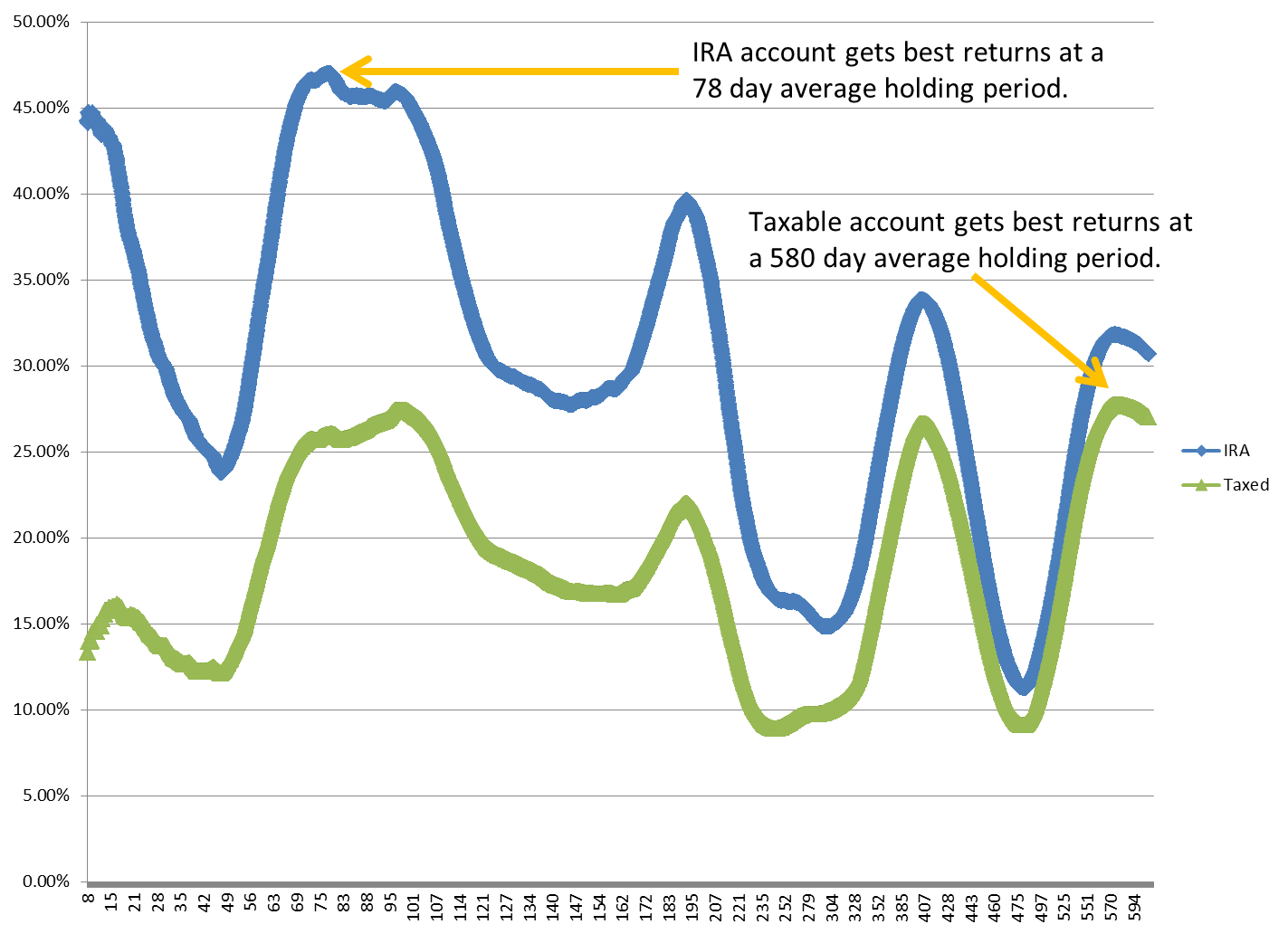-
02/24/2013 Mousetrap
Sector Model XLU 38.96%
Large Portfolio Date Return Days
BBRY 7/16/2012 81.79% 223
SEAC 9/25/2012 41.86% 152
CAJ 9/25/2012 4.36% 152
CFI 10/31/2012 35.67% 116
RE 11/26/2012 18.46% 90
CGX 12/12/2012 8.14% 74
NSC 1/28/2013 5.65% 27
BOKF 2/4/2013 6.28% 20
SWM 2/12/2013 3.14% 12
GMCR 2/19/2013 2.57% 5
S&P Annualized 6.95%
Sector Model Annualized 20.83%
Large Portfolio Annualized 32.41%
From: http://market-mousetrap.blogspot.com...rown-blog.html
Rotation: selling CGX; buying OKE (again).
I’ve been making some improvements to the model that will not appear on the blog selections, but they are worth discussing.
First, after years of persistent nudging from a friend, I’ve finally worked out how the model can be used on the short side as a hedge. The results of a fifteen year back-test confirmed the procedure, and I’m planning to pursue these improvements – but not on this blog. The blog itself is designed for folks with cash accounts that they don’t need to spend a lot of time managing.
And that brings me to the second part of this week’s missive: time. Or more specifically, holding periods.

Those of you who’ve endured a few weeks of my tax posts will be aware of the problem with the change in capital gains taxes. They used to be 35% short term and 15% long term. Now they are 43.8% short term and 23.8% long term.
That change shifts the realized gain calculations of the model enough to trip the holding periods for a taxable trading account into a long term rotation pattern. Instead of rotating once a week, a taxable account would rotate 1 of the 10 stocks once every two months.
The net effect for the government is that instead of getting the 35% they used to get every year, they’ll get 23.8% every two or three years (i.e. about 10% per year). By raising rates they’ll cut their revenue to about a third of what they got before.
The capital gains rates had already been optimized for maximum government revenue at the 35% and 15% levels. ANY change, whether down or up, would get less revenue. For those concerned with paying off the national debt, BOTH Romney’s proposed cuts and Obama’s proposed raises would bring in less money.
For the investing public this will be an unconscious process – those who trade less often will be left with most of the money.
For my model, it’s a deliberate formula to maximize realized after-tax gains.
The details of the calculations include which portion of gains are dividends and which is from the sale of price appreciation. Also included is the size of the account (for the impact of trading costs). Right now it’s set for my own account (for obvious reasons).
The question for the blog is – which do I report? For now I’ll continue the weekly rotation, but a person with a taxable account could do better by only trading once every two months and ignoring 7 out of 8 of those weekly stock picks. The only problem with that idea is the second crucial aspect of a trade: WHEN TO GET OUT. The blog will calculate when to get out of a weekly rotation. I don’t plan to do so for a slower one (not here).
So that leaves me with far too many variables to take full advantage of in a little blog. The blog is set for a long only IRA account – no margin, no taxes, and no shorting.
What is possible (beyond the blog) is a self-adaptive long/short hedged portfolio calculated for maximum total returns after taxes and trading costs, specifically balanced for both the size of the account and the tax exposure of the client base.
It would not just be targeting OKE on the long side, for instance – but also targeting CHTR on the short side.
But that’s more than will fit here.
The model has grown far more robust than I had imagined when I launched it on 5/31/2011.
I feel like giving it a graduation prize.
I would add that the enhancements will give me a bit more insight than I’ve had before. A hedged model, for instance, would be about 40% short and 60% long at the moment. That’s more “bullish” than is currently in the news with the sequestration scares and panic over Walmart’s February sales. And, while the model could be wrong, it’s usually better than the scare tactics and bullish fantasies that we find on the front page.
Tim
 Posting Permissions
Posting Permissions
- You may not post new threads
- You may not post replies
- You may not post attachments
- You may not edit your posts
Forum Rules



 Reply With Quote
Reply With Quote